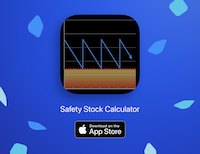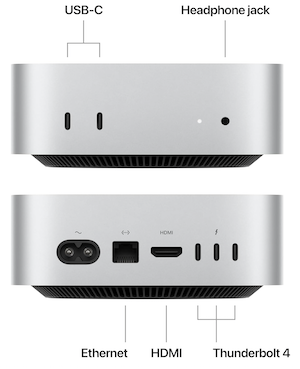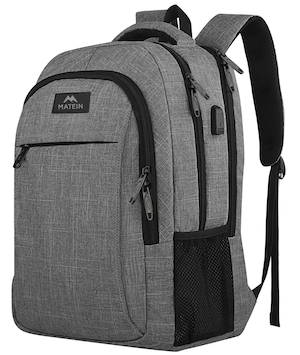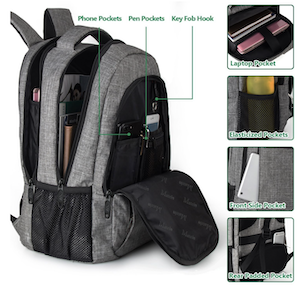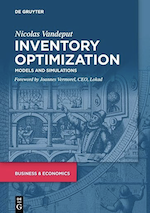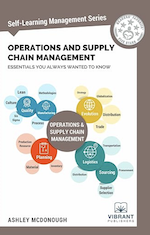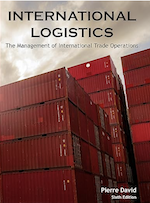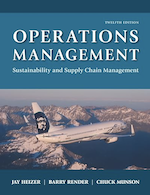

In supply chain management, service level is an indicator that measures how effectively a company meets customer demand without experiencing stock-outs. It plays a key role in some methods of calculating the safety stock.
What is Service Level in Supply Chain Operations?
In supply chain operations, service level measures a company's ability to meet demand without experiencing shortages. It represents the reliability of inventory availability and is often used as a key indicator of supply chain performance and the starting point of some approaches to determine safety stock.
It is a probability measure, not a guarantee of demand fulfillment. Hence, it is expressed like a percentage from 0% to 100%. So the underlying number will range from 0 to 1 in real numbers or when you work with Excel or others spreadsheets.
Intuitive interpretation:
A value of 0 means a company is always in shortage or fails all shipments to customers.
A value of 1 (100%) means a company never suffers shortages and meets all customer requirements.
You might wonder, why not set it at 100%? Increasing the service level means increasing stock, which impacts costs. I will discuss this in depth in the section "Trade-off between Inventory and Service Level." Caveat: In theory, a 100% service level would require infinite stock.
However, the way to calculate this percentage varies depending on the approach used to determine whether customer demand is satisfied or not. This depends on the business model or company culture. The most common methods are:
🔹 Order Line Fill Rate: The percentage of order lines fulfilled completely without backorders or lost sales.
🔹 Cycle Service Level (CSL): The probability that there is no shortage during a replenishment cycle. If a company has a CSL of 90%, it means that in 90 out of 100 replenishment cycles, there is enough stock to meet demand.
🔹 Fill Rate: The percentage of total demand fulfilled from available inventory. Unlike service level, fill rate considers the quantity of demand met, not just the probability of meeting it.
An example of Service Level calculation
We take the "Order Line Fill Rate" method, so:
Service Level (%) = (Number of Orders Lines Fulfilled Without backorders / Total Orders) × 100
A company receives 1000 lines of orders in a month and successfully fulfills 850 orders, then the service level would be:
(850 / 1000) × 100 = 85%
Trade-off Between Inventory and Service Level
Take into account this statement when your are deciding your Service Level: When you halve the distance to 100% service level, your required safety stock doubles.
So, increasing the service level when it is low has a reduced impact on inventory levels, but when it's already high, the impact is huge. Going beyond 95% should be a very meditated decision.
Service level directly impacts the cost structure of a business. Holding higher inventory increases costs, while reducing stock raises the risk of stock-outs, leading to lost sales, dissatisfied customers, damage to brand reputation and so on.
To make data driven service level decisions, you must evaluate the sector and impact of the shortfalls:
In grocery retail, missing essential products can drive customers to competitors permanently.
In fashion retail, stock-outs may push customers to buy alternative products or abandon their purchase entirely.
In spare parts supply chains, missing a crucial component (for example an aircraft part) can lead to operational shutdowns and significant financial losses.
Costs:
The cost of holding extra inventory (warehousing, insurance ,capital tie-up, potential obsolescence).
Lost Revenue from Stock-outs and customer churn.
Fines by shortage and backorders
Cash Flow Considerations
Stock-outs delay revenue realization and can impact supplier relationships.
Relationships between Service Level and other Supply Chain KPIs
Service level isn't an isolated or unique KPI. It impacts many other Supply Chain and Finance KPIs, such as OTIF, working capital, cash flow, number of backorders, Days of Supply (DoS)...
Most of the time, in Supply Chain Management other metrics are more relevant within the organization, hence service level should be considered more of an Operational Key Indicator (OKI) than a KPI. Also, we can use it as a productivity and self management tool to reach higher goals, for instance: revenues keeping stock level and shortages controlled.
Tips to calculate the Service Level taking data informed decisions
I hope these tips will lead you to avoid non derivable collateral effects when you set the service level and improve your supply chain management and operations.
The first one is classify your portfolio into families, a very limited number to avoid unnecessary workload and keep it simple. The criterion for classification should align with the main KPI of your company, for example stock value, revenues, ... The ABC matrix is a very useful categorisation method and my recommended approach.
Once you have the families assign the same value to all the products of the same family. The values must be aligned with your business rules, there isn't a universal rules. I explain two cases:
When Stock Value is the leading KPI
Products with the highest total cost of goods should have a lower service level (don't take value per unit, consider the total costs of the goods that you sold in a specific period of time), meanwhile products with the lowest total cost of goods should have a higher service level.
This strategy ensures that management time is focused on products with the greatest impact on stock value. It also accepts more risk for expensive products because the reward for the main KPI is greater.
At the same time, this approach prevents unnecessary effort in avoiding shortages for products with minimal impact on stock value, allowing for better prioritization of actions.
When Revenue is the leading KPI
Products that generate the highest revenue must have the highest service level to prevent stock-outs and lost of sales.
Products with low revenue can have a lower service level since a stock-out in these items has a minimal effect on the main KPI.
Software Applications for Supply Chain
Safety Stock Calculator
Safety Stock Calculator is an app designed to fast accurate and calculations of your safety stock.
AI Prompt Builder
AI Prompt Builder is your all-in-one solution to simplify prompt engineering, not waste time on your writing verbose. Create high-impact AI prompts and boost your productivity, focus in bring AI features andbenefits to your logistic and supply chain workflows.

